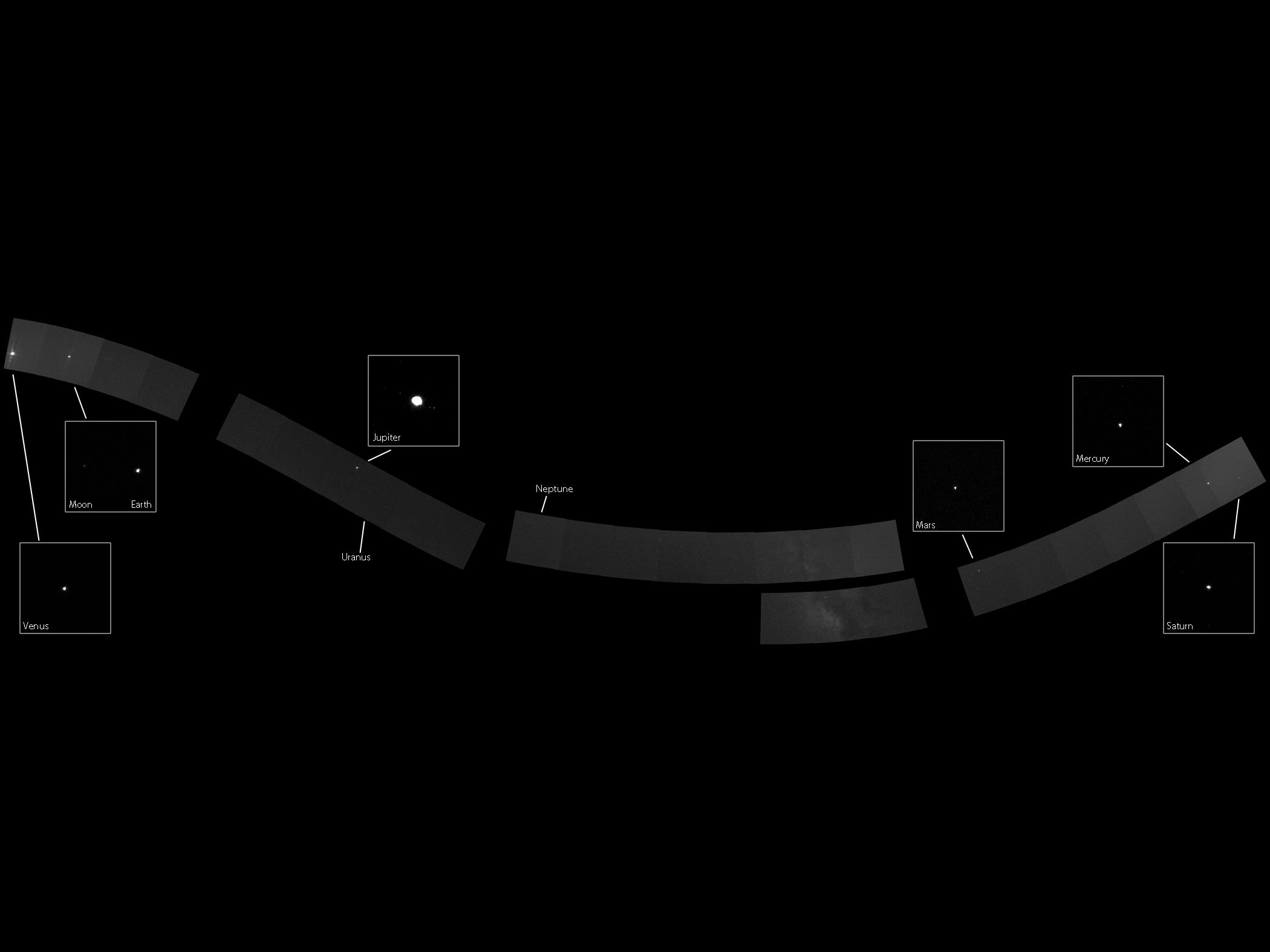Have you ever wondered what our solar system looks like, what you would see if you had the chance to look at it?
Thanks to NASA’s MESSENGER probe, you can now have an idea of what you would see if you were looking at our solar system, from the inside out. The spacecraft was launched in 2004 to study the chemical composition, geology and the magnetic field of Mercury.
Before entering Mercury’s orbit, on March 17, the spacecraft was commanded to turn around and take a series of images. After piecing together the different images, the MESSENGER team obtained this amazing family portrait of our solar system:

Click the picture to enjoy a full view and see it in more detail. You will see five of the planets of our solar system, including the Earth, accompanied by the Moon. Uranus and Neptune are also on the picture, but they are unfortunately too faint to see. These photographs were taken by MESSENGER’s Wide Angle Camera (WAC) on November 3 and 16, 2010.
The fact that all the planets are here visible as dots reminds us how far the probe is from our planet, but this is still a wonderful picture. Venus appears the brightest on the picture, as the spacecraft was inside its orbit.
If you look at the Earth, you can see that it is not alone: its companion the Moon is also here! Another nice aspect of this picture is that it reminds us how far the Moon actually is from the Earth (between 360,000 and 400,000 kilometers away, approximately).
Jupiter is also surrounded by a few of its moons: Ganymede, Io, Europa and Callisto are visible. All of them are pretty big. Ganymede is the biggest satellite in the solar system, it is actually a bit bigger than Mercury itself! Callisto is approximately the size of Mercury, and Io and Europa are about the size of the Moon.
Finally, if you look at the area between Jupiter and Mars on the picture, you can see a hazy, darker, glowing streak: this is the Milky Way!
Telescopes like Hubble for example often offer us some amazing pictures of deep space, with breathtaking views of galaxies, nebulae, or star clusters; although we are able to see that, we shouldn’t forget how vast and magnificent our own solar system is. MESSENGER will soon be orbiting Mercury, and will send us some new astonishing pictures; we are still exploring our solar system, and will be for a very long time. The very solar system that another probe, Voyager 1, is about to leave.

